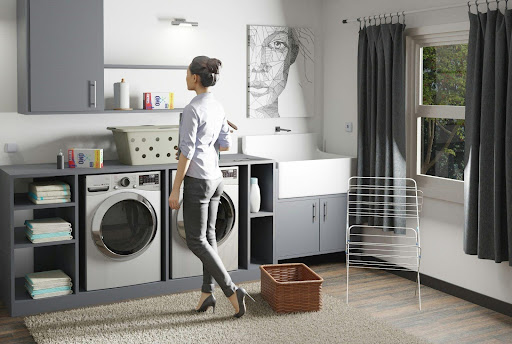Ever notice how the tiniest tweaks can completely change your space—or even your mindset? From rearranging your living room to swapping in minimalist, eco-friendly essentials like the compact laundry detergent sheets from https://www.getcleanpeople.com/, little decisions ripple into bigger impact. You don’t need to overhaul your life to live greener—you just need to start where you are, one swap at a time.
Welcome to the realm of eco-chic home hacks, where style meets sustainability without sacrificing function. This isn’t about going off-grid or sprouting your own hemp wardrobe. It’s about reclaiming your space—and your habits—with cleaner, smarter choices that don’t just look good, they do good.
Why “Small Swaps” Work
Think of your daily routines as a giant machine: laundry, cleaning, organizing, breathing (hopefully in that order). Most of us run this machine on autopilot. But when you replace a single gear—say, harsh chemical sprays with a vinegar-based cleaner—the whole rhythm starts to shift.
Psychologists call this the “habit loop.” Once you change a cue or reward (like your go-to laundry product), it becomes easier to shift the whole behavior. This means small home swaps aren’t just cosmetic—they’re behavioral nudges toward a more conscious lifestyle.
And because you repeat these actions weekly (or daily), their environmental impact adds up. Less waste. Fewer toxins. More breathing room. Literally.
The Kitchen: Small, Greasy Wins
The kitchen is both sacred and chaotic. It’s where we burn toast, microwave leftovers, and sometimes contemplate sourdough. But it’s also a major culprit in plastic and chemical waste.
Swap #1? Banish the plastic soap bottles. Solid dish bars or refillable glass bottles cut down on packaging and elevate your sink aesthetics.
Next: toss those paper towels (figuratively). Reusable cloth towels or Swedish dishcloths can last months, and honestly, they make wiping counters weirdly satisfying. Bonus points if you color-code them to avoid bathroom/kitchen cross-contamination—your immune system will thank you.
As for cleaning sprays, a simple blend of vinegar, water, and essential oils in a reusable spray bottle cleans like a charm. And smells like a spa, not a chemistry lab.
The Laundry Room: Suds & Style
Laundry day doesn’t have to feel like a chore handed down from a 1950s manual. Enter the minimalist revolution—sleek containers, natural textures, and, yes, detergent that doesn’t come in jugs the size of toddlers.
This is where those Clean People laundry detergent sheets shine (literally and figuratively). No plastic, no mess, no guessing—just toss one in and go. They dissolve instantly, leaving behind fresh scent and a clean conscience. Also, they take up practically zero space, making your laundry area feel less like a storage closet and more like a curated corner.
Dryer balls over disposable sheets are another upgrade. Wool versions can last years, reduce static, and even speed up drying time. Pair with a few drops of lavender oil and boom: your laundry smells like a boutique instead of burnt polyester.
The Bathroom: Spa Vibes, Earth Style
Image from Unsplash
Your bathroom might be the smallest room in the house, but it’s a big opportunity for eco-swaps. Start with packaging—opt for bar soap over bottled body wash, bamboo toothbrushes instead of plastic, and reusable cotton rounds for skincare routines.
Even toilet paper has gotten an eco-makeover. Look for recycled paper or bamboo rolls wrapped in paper, not plastic. If it looks cute stacked in a basket? Even better.
Cleaning products also deserve a rethink. Many bathroom sprays contain ammonia or bleach, which can irritate lungs and waterways. Natural alternatives using hydrogen peroxide or baking soda clean just as effectively—plus you won’t feel like you’re doing chemistry experiments without goggles.
And yes, if you’re truly ambitious: bidets. They’re wildly more sustainable and, according to converts, surprisingly luxurious. Like having a tiny spa day, every day.
The Closet: Slow Style, Not Fast Fashion
Clothing isn’t usually top of mind in home hacks, but it should be. The fashion industry accounts for nearly 10% of global carbon emissions. That’s more than international flights and maritime shipping combined.
The good news? You don’t have to trade your style for a burlap sack.
Start with what you already own—organize it by color, season, or joy factor (thanks, Marie Kondo). Donate or resell what doesn’t serve you. Next time you shop, look for secondhand gems or sustainably produced brands that favor organic cotton and fair labor.
And once those clothes are in your wardrobe? Treat them kindly. Wash less often, air-dry when possible, and use gentle, chemical-free products. Your clothes—and the planet—will last longer.
According to the New Standard Institute, extending the life of clothing by just nine extra months of active use can reduce carbon, water, and waste footprints by 20–30%. Not a bad return for skipping one trip to the dryer.
The Hidden Bonus: A Lighter Mind
Here’s something no one tells you when you start living more sustainably: it actually feels really good.
Decluttering plastic containers, swapping in glass or ceramic, choosing brands that align with your values, it’s empowering. It’s the subtle joy of knowing your everyday actions align with your ideals. And in a world that often feels overwhelming, that alignment is a balm.
Your home becomes more than a place to sleep and eat cereal—it becomes a reflection of your choices. Of your care. Of your small, intentional impact.
When Swaps Become Standards
The beauty of these eco-swaps is that they often become permanent. Once you switch to reusable storage bags or find a detergent that works without plastic bulk, you rarely go back. These aren’t gimmicks—they’re upgrades.
Sure, you might start with one thing: a detergent sheet, a cloth towel, a glass spray bottle. But before long, your home feels… different. Lighter. Calmer. More in tune.
And that’s the whole point. Sustainability isn’t a sacrifice—it’s a refinement. A quiet revolution that begins at home, in the small moments where we decide what to toss, what to keep, and what we’re willing to change.
So go ahead: start small. Those tiny swaps? They add up. And they look damn good doing it.

